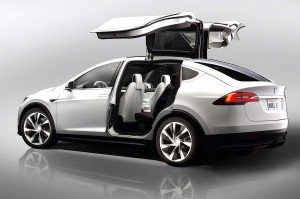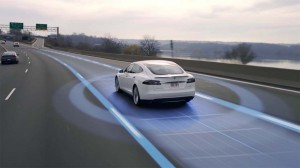The crash of a second Tesla vehicle reportedly operating in Autopilot mode is raising new concerns about not only the maker’s semi-autonomous technology but how the battery-carmaker is handling a potential problem that has already touched off a federal safety probe.
Albert Scaglione, an art gallery owner from Southfield, Michigan, was behind the wheel of a 2016 Tesla Model X when it crashed and rolled over on the Pennsylvania Turnpike last week. According to the police officer who responded to the crash, Scaglione said he had just activated the Autopilot system, which is designed to permit partial hands-free driving on limited-access highways.
The crash occurred a day after the National Highway Traffic Safety Administration announced it would investigate a fatal wreck in Florida that occurred on May 9th. Driver Joshua Brown, 40, was killed when neither he nor the Autopilot system in his Tesla Model S responded by braking when a semi-truck turned in front of the vehicle.
(For more on the fatal Tesla Autopilot crash, Click Here.)
Precise details of the second crash, which occurred about 100 miles east of Pittsburgh, have yet to be confirmed. A report by the Detroit Free Press quotes Pennsylvania State Police Trooper Dale Vukovich stating in his report that the Scaglione vehicle hit a guardrail and then ran “off the right side of the roadway. It then crossed over the eastbound lanes and hit the concrete median.”

Art gallery owners Albert Scaglione claims he had just turned on the Autopilot system in his Model X when the crash occurred.
For its part, Tesla said it is also launching an investigation, a spokesperson adding that, “We have no data to suggest that Autopilot was engaged at the time of the incident. Anytime there is a significant accident Tesla receives a crash detection alert. As is our practice with all collisions, we immediately reached out to the customer to make sure he was safe. Until the customer responds, we are unable to further investigate.”
Nonetheless, the second crash is likely to increase scrutiny of the Autopilot system that Tesla added to its two production models late last year. But is also puts autonomous driving, more broadly, under the microscope at a time when most automakers are rushing to put their first fully hands-free vehicles into production. NHTSA itself plans to enact the first federal rules covering autonomous technology by the end of this year.
Complicating matters, Tesla CEO Elon Musk is coming under fire for the carmaker’s decision not to publicly reveal the May 9th fatal crash until NHTSA announced its preliminary safety probe last week. The carmaker did alert the safety agency nine days after the wreck occurred. But some skeptics are wondering why no public comment was made for nearly two months.
That includes Fortune magazine journalist Carol Loomis, who questioned whether the accident should have been announced immediately considering it occurred just before Tesla’s latest stock offering took place on May 18th, raising $2 billion in cash the company said it needed to help finish development of the new Model 3 sedan set to launch during the second half of 2017. The company’s first mainstream product, the Model 3 is considered essential to Tesla’s long-term success.
CEO Musk responded by declaring the incident “is not material to the value of Tesla.” The debate turned quickly personal, however, as Fortune Editor Alan Murray entered the fray, declaring it “Seems material to me,” in a tweet on Tuesday morning. Musk followed with his own tweet, “Yes, it was material to you – BS article increased your advertising revenue.”
(Tesla production up for Q2 but sales fall short of goal. Click Here for more.)
The final word could come from the U.S. Securities and Exchange Commission, the regulatory body that oversees such matters as corporate disclosures. But whether or not the SEC gets involved, the second crash is likely to escalate NHTSA’s investigation of the Autopilot system – and raise public concerns, as well.
Tesla itself appears to be walking two sides of the fence, both bragging about the capabilities of Autopilot while also insisting that the technology is still in beta, or development, phase and should only be used in specific ways. There’ve been numerous reports in recent weeks highlighting potential abuse of the semi-autonomous system, however, one YouTube video showing a driver engaging the technology and then climbing into the back seat.
Eventually, that could become completely reasonable. Nissan is one of several automakers planning to launch fully autonomous vehicles by the beginning of the next decade. Those will still require a driver sitting behind the wheel, ready to take over in an emergency. But totally driverless cars could follow soon afterwards, ride-sharing service Uber setting its own research center to promote that goal.
NHTSA has been holding public hearings as a prelude to its plans to issue the first federal guidelines on autonomous driving technology. NHTSA Administrator Mark Rosekind is a strong proponent, as are a number of safety experts, but the hearings have brought out critics, as well, who are urging the agency to take a go-slow approach. The two pilots blamed on Autopilot could increase pressure on NHTSA to rein in the rush to market hands-free driving systems.
(Planned Tesla takeover of Solar City kicks off firestorm. Click Here to learn why.)


